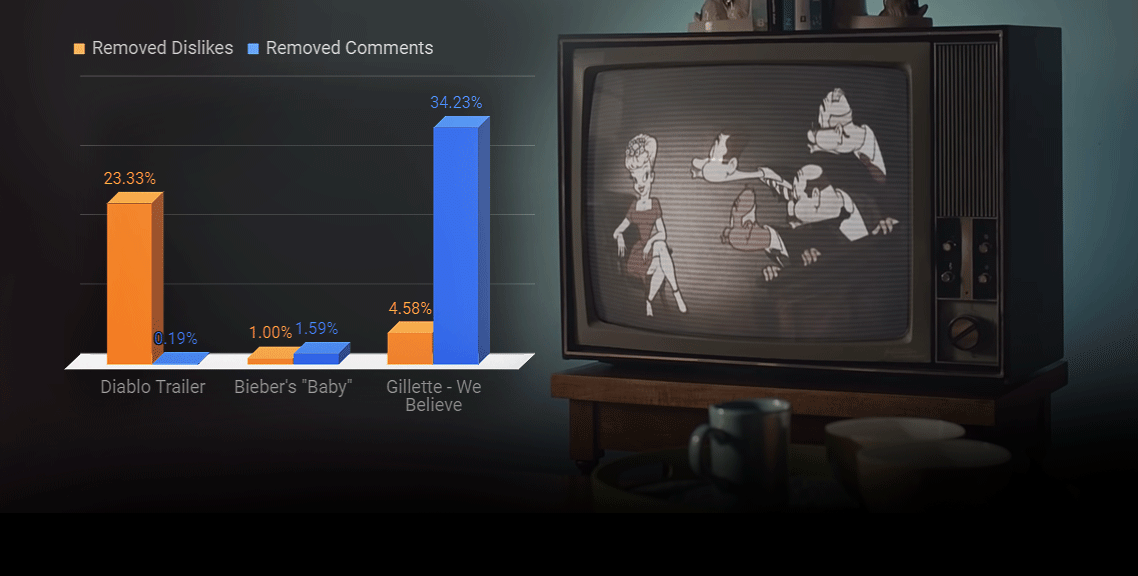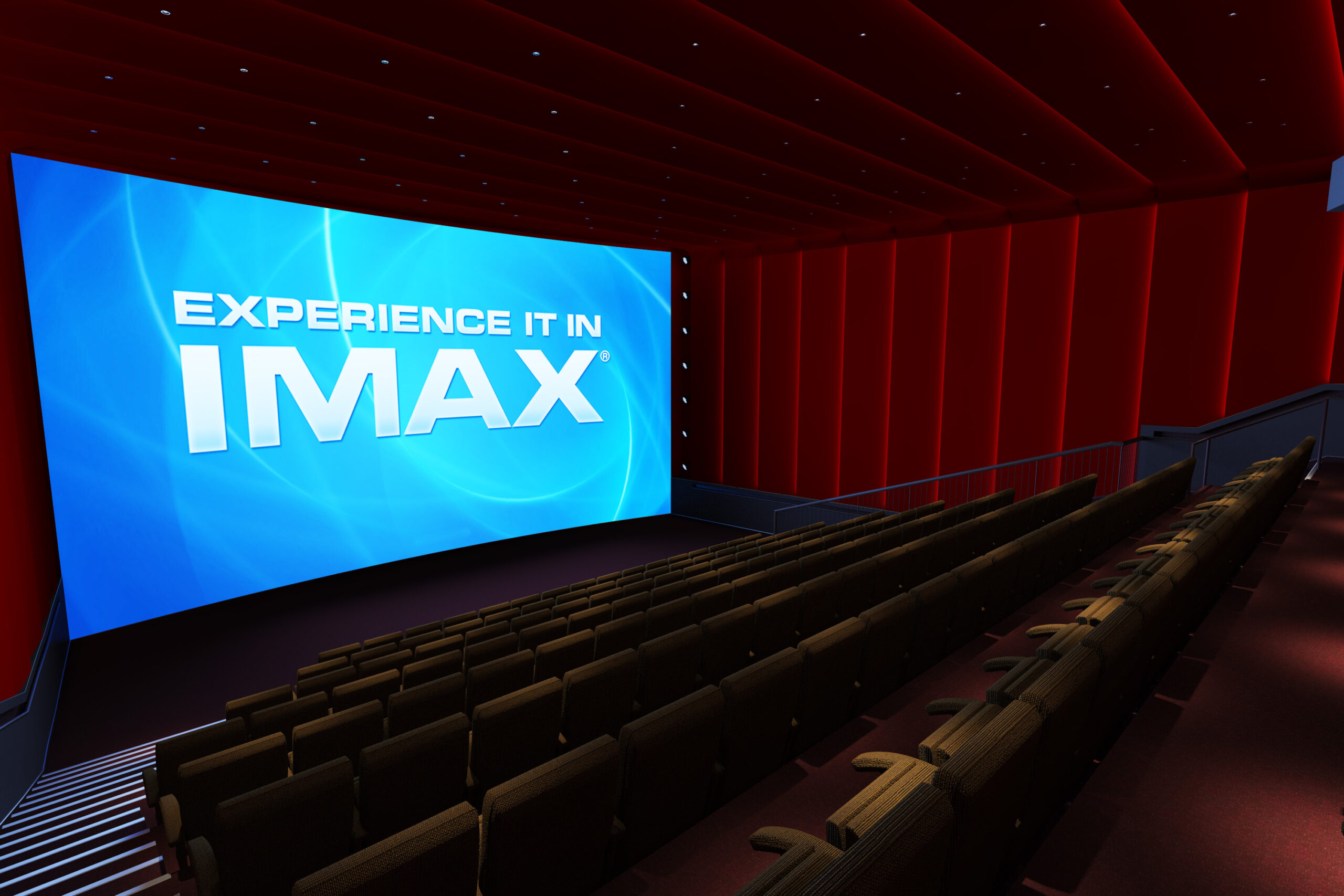For audiences nearly a century ago, magic was believed to play an integral part in the production of filmmaking. Filmmakers were like magicians, discovering new techniques to fool its viewers into believing the unbelievable, and causing them to jump at films like Arrival of the Train (Lumière, 1895). However, film brought more than illusion; it was the first medium to capture life as it unfolds in real time. A film like Nanook of the North (Flaherty, 1922) was the first of its kind to utilize filmic technology to capture the unknown and deliver it to the industrial world. In this article I will explore how technological advances have had an impact on the progression of documentary filmmaking, focusing specifically on IMAX’s 3D technology. IMAX’s technology has introduced what I’m calling a 7th sense, a movie-going experience that’s bringing people back into theaters and reacting similarly to how they did a century ago to films like that of Lumière and Flaherty. Documentaries, as we’ll discuss, are narratives that balance between both fact and fiction; in order to explore this further, I will focus on how the IMAX format challenges or enhances the validity of documentaries given its technological advances. IMAX’s technology has become so sophisticated that the manipulation of image, as I’ll discuss, has almost become a fabrication in and of itself due to its high pixel density. Yet, its images are perceived to be so real that people today are reacting physically toward films, just as they were 100 years ago to its ‘illusions.’ To explore IMAX’s influence on a documentary’s validity, I will use John Belton’s Widescreen Cinema to discuss the history of 3D and the 70mm format to provide context as to where we are today. I will also draw from John Belton’s “Digital 3D Cinema: Digital Cinema’s missing Novelty Phase,” as well as Thomas Elsaesser’s “The ‘Return’ of 3D: On Some of the Logics and Genealogies of the Image in the Twenty-First Century” in order to discuss the effects of 3D and digital technologies to deduce how its not only revolutionizing documentary, but also generational experiences. IMAX prides itself on its unique, fully immersive format; having recently invested tens of millions of dollars in its documentaries. IMAX is hinting at a continued desire to not only continue to educate their audiences, but to also attempt to turn real life into a cinematic experience. I will conclude in answering the question of whether the IMAX format is eradicating cinema as we know it, or if IMAX is a form of cinema’s rebirth and thus creating a form of commercialized documentary; where moviegoers would actively go to a museum or multiplex to watch a documentary film for both its cerebral and cinematic experience. In exploring these complexities we will see how documentary’s mix of fact and fiction work into the IMAX format, and where this could take the future of documentaries.
Cinerama was one of the first successful commercialized theaters to display widescreen cinema to the masses. It was originally a medium for documentary travelogues, built during a time when the film industry feared cinema’s decline over television’s growing popularity and success. At Cinerama’s release, “reviewers spoke of Cinerama as if they were seeing motion pictures for the first time.”[1] Cinerama was described as having a larger-than-life experience that drew people away from their televisions and back into the theaters. As Belton describes, “Cinerama recaptured the experience of those early films and restored affective power to the motion picture… Even veteran airmen reacted to Cinerama’s illusion of reality.”[2] Cinerama, much like IMAX 3D as I’ll discuss, re-stimulated the senses in a way moviegoers had never experienced. Cinerama was not as passively consumed as narrative cinema as it allowed for its viewers to gain awareness with the screams and gasps of their fellow spectators; it was “not so much something people saw as something they did.”[3] In its 360-degree, 300 by 30 foot screen and 70mm format, Cinerama’s technology gave something to cinema that hadn’t been familiarized before.[4] Thus, Cinerama’s format created an inter-audience sense of participation, where its effect was intensified by the viewers’ reactions as well. Their expansive screen introduced a consuming experience that challenged conventional ways of projection and filmmaking, compared to the common 35mm format. Cinerama’s travelogue plots “took advantage of Americans’ increased interest in domestic sightseeing and travel abroad” post WWII, introducing a new kind of documentary that was both cerebral and a spectacle.[5] So many people were enthralled by what they saw at a Cinerama theater that it even stimulated tourism; IMAX arguably emulates this format today in the making of their transcendent nature documentaries.[6] Cinerama’s technology “constituted the most extreme instances of cinema as pure spectacle, pure sensation, pure experience.”[7] Thus, Cinerama’s innovations paved the way for IMAX’s immersive experience today that is setting the precedent for how we watch films, all of which began with documentaries.
To this day, IMAX’s original content resides in documentary filmmaking where their focus relies on nature/space narratives, perhaps knowing that stylistically, its format caters best to these genres. Elsaesser agrees scenes that “have no horizon, where characters are floating or leaping, flying or swimming seemed to work much better in 3-D than scenes with people walking or talking in shot-counter shot.”[8] Thus, IMAX’s format best utilizes the expository and even reflexive modes as their idiosyncratic technologies are best suited for shots that focus on the grandeur of nature; their 3D technology throws itself at the audience to make them aware of its intrusive nature and immersive technology in violating normative space.[9] By focusing on these characteristics, IMAX caters to what first fascinated people when film was introduced over a century ago. As Bill Nichols describes in Introduction To Documentary, documentaries originated from “cinema’s love for the surface of things, its uncanny ability to capture life as it is… of people, places and things,” a characteristic that resonates with IMAX’s documentary brand.[10]
Elsaesser discusses how modifications are made in technologies in order to produce greater effects of realism in films; documentaries over time have adopted new technologies to explore different techniques. We saw this for example in the mid 20th century with the introduction to portable cameras, which produced the “fly on the wall” technique, or what became known as “direct cinema”; similarly today, the use of GoPros now allows for a visceral, up-close experience in films like, Leviathan (Zvyagintsev, 2012) as well.[11] However Elsaesser posits that attaining realism is what drives technological advancements in film, where today 3D now sits in the driver’s seat despite critic speculation. He writes,
Much of the objective to 3-D on the part of critics and even filmmakers comes form the assumption that 3-D enhances vision and produces greater and greater realism – realism being one of the enduring, if questionable teleologies said to drive the history of the cinema and its chief technological innovations (silent to sound, black-and-white to color, 2D to 3-D).[12]
Recently IMAX introduced their latest laser projectors that shoot two projectors at once, without a glass prism (as opposed to most digital projectors that still operate using a glass prism and a single projector). Taking away the prism technology redirects “the light from a trio of lasers onto a screen in precise mixes and intensities to reproduce more colors then the human eye can discern.”[13] Still, no such technology can steer away from the documentary’s inevitable balance between fact and fiction. Given that documentaries operate through a series of shots edited together to construct the filmmaker’s point of view, there exists a bias and thus fictional element through such manipulation.[14] If IMAX’s new technology produces more colors than the human eye can process, it’s as if IMAX’s documentaries balance between fact and fiction on both a narrative and technological level. As Nichols writes, “Documentary voice… derives from the director’s attempt to translate his or her perspective on the actual historical world into audio-visual terms.”[15] However, IMAX’s technology challenges Nichols’ described voice as told by “audio-visual terms,” as it both confines and liberates directors in persuading them to shoot for the IMAX format. In other words, IMAX’s audio-visual terms can influence a director’s voice in how they decide to film in order to specifically cater towards 3D. However, if we compare this idea to direct cinema it isn’t much different to a filmmakers “fly on the wall” technique, where their audio-visual terms were also shaped by the functionality of new portable cameras thus forming new kind of documentary filmmaking. Moreover, this technological bias in filming with IMAX is what Nichols would also argue to be an “institutional framework.” [16] In this case, our framework operates within the technological bias in addition to the narrative bias; thus my interest resides in the issue regarding visual veracity given IMAX’s technology. However as Elsaesser argues, “3D is only one element resetting our idea of what an image is and, in the process is changing our sense of spatial and temporal orientation and our embodied relation to data-rich simulated environment.”[17] In combining narrative and technological biases IMAX technologies have uncovered a 7th sense in a growing technical era where it can take more than a film’s anecdote to produce external human reactions. It is in fact these perceived technological biases, given its unique format that causes viewers to be convinced of what they are seeing on screen, as it would be in person.
IMAX’s novelty resides in the fact that their documentary brand is an attempt to create a product where digital 3D will finally offer, as Belton describes, “audiences something they could not get at home or in conventional, non-digital, movie theaters.”[18] IMAX’s technology is revolutionizing the way we watch documentaries and is changing moviegoers’ generational perceptions towards cinema. It taps into a 7th sense, with the ability to change our “perceptual and sensory default values… a different awareness of bodily orientation and physical location.”[19] Wim Wenders’ film, Pina (2011), and Werner Herzog’s film, Cave of Forgotten Dreams (2010), are both examples of a director’s first serious venture into documentary; documentaries that capitalize on the transcendence of 3D.[20] Elsaesser quotes Nick James, a film critic, who evaluates these documentaries and the ambition in making them 3D specific. James says, “As a spectator, to be positioned by the camera above, beside and amid the dancers of Bausch’s Wuppertal troupe is not unlike floating bodiless through more solid phantoms” and in the case of Herzog’s film he writes,
The tremendous sense of movement in these depictions of animals depends on the curvature of the walls of the Chauvet-Pont-d’Arc caves…. Together, these [two] films suggest that 3-D might find its best uses in bringing real rather than imagined things to us.[21]
James’ critiques might seem contradictory given the digital nature of 3D and the capability to manipulate image and process; a contradiction that would lead most of us to believe such perceived manipulation would equate to fabrication. However, the validity of what is being seen in an IMAX film should be measured less on an objective, technological level and more on a subjective, emotional base that’s measured by an audience’s initial reaction. Audiences recognize something that is inherently unrealistic, like animation films and CGI effects in action movies like Gravity (Cuarón, 2013); it’s these fabrications that are losing the attention of moviegoers by creating a sense of impersonal and emotional detachment. However, the intention of 3D is to relieve that feeling in moviegoers through its advancements in technology, as opposed to its technology detaching from the real. It can take fictional movies like Gravity (Cuarón, 2013) and make them feel that much more realistic. It can more importantly take documentaries, films that deliberately try to portray the real, and get them the closest they can be to authenticity. It can immerse us in something that we know to be objectively true, like Mount Everest or NASA space aviation, and trick us in literally feeling immersed in the landscape of the movie – even if just for a moment. IMAX does this through stimulating a newfound sense that intrudes into personal space, enlarging “the scope of perceptual responses” and deepening “the affective engagement of the spectator.”[22] This kind of engagement adds to the audience’s perceived validity of the film, working in tandem with our senses thus making it feel more real. In doing so, it works in two ways that make it a spectacle to be seen, working towards “integrating the originally disruptive effects of stereoptic depth cues with other monocular depth cues, such as resolution, shading, color and size.”[23] In other words, by combining the monocular, a more simplistic form of optics that literally translates into having one eye, with stereoscopies, the concept of 3D that creates depth of vision through angling two photographs, it has the potential to enhance a film’s perceived validity in creating the realist representation that it can in a documentary. Despite the debatable factual evidence of what is being told in a narrative sense, the root of the technology’s objective is to show the footage in its realist and clearest potential.
IMAX is working towards becoming the mainstream way in which we watch films. As Belton argues much of the slow progression in integrating a technology that emulates the real comes from its lack of undergoing a “novelty phase.”[24] As Belton describes, “Digital 3D marks an attempt on the part of the film industry to artificially manufacture a novelty phase for digital cinema.”[25] In other words, it’s becoming the answer towards cinema’s rebirth and the way future generations will watch movies of all kinds. 3D continues to improve the movie-going experience through focusing on perception through all sensory organs. Thus, to answer our original question, IMAX’s format ultimately enhances the validity of a documentary film. 3D is becoming a “sensory substitution, where sound becomes a modality of seeing, making vision an appendage to hearing, with monocular sight increasingly submerged in the sea of stereo sound.”[26] To draw a comparison, IMAX and the Sensory Ethnography Lab (SEL) at Harvard are attempting to accomplish similar tasks with documentary. Our senses are becoming the point of interest in catching our attention in order for us to relate with the validity of a documentary. SEL describes their mission as “taking their subject the bodily praxis and affective fabric of human and animal existence,”[27] while IMAX similarly states it is an “experience so real you feel it in your bones, so magical it takes you places you have never been; so all-encompassing you’re not just peeking through the window, but part of the action.”[28] Thus, despite the commercialized differences in these places, I draw this comparison to show IMAX is not the only place cognizant of the importance of sensory stimulation in movie going. They each demonstrate how both commercialized and non-commercialized industries are recognizing the importance of exploring a 7th sense to bring back what initially attracted people to cinema.
John Grierson first defined documentary in the 1930s as being a “creative treatment of actuality,” acknowledging the creative outlet that documentaries also represent.[29] In the case of IMAX, their creative outlet lies not only in the narratives they tell but also in its game-changing technology. Cinerama was an example as to how technology continues to be a player in the growth of documentary filmmaking, as it also introduced a new form of projection that refreshed the movie-going experience into a spectacle. As time progressed, these widescreen formats became more sophisticated where IMAX was born, introducing new and even more immersive ways to illustrate documentaries. IMAX’s documentary narratives would cease to be the same without their 3D technology and vice versa; they portray the world in ways no other documentary formats can compare, as they’ve become leaders in trying to portray the real via advanced 3D technologies. IMAX has combined documentary’s factual and fictional elements in its deception also through its technology; in doing so IMAX has brought the magic back to cinema, leaving their audiences to feel inquisitive yet convinced of what they just saw. IMAX’s technology has not only enhanced the validity of documentaries through the reactions of its spectators, as a critic described their experience as being like “the first time you have an In-N-Out Burger, and then realize you can never step foot in a McDonald’s ever again;”[30] what’s more, it has expressed a desire to move from the confines of two-dimensional representations, to the wealth of a three-dimensional space, repairing the dormancy of cinema in the process.[31]
—-
References
- Belton, John. Widescreen Cinema. Cambridge, Massachusetts: Harvard University Press, 1992.
- Belton, John. “Digital 3D Cinema: Digital Cinema’s Missing Novelty Phase.” Indiana University Press, 2012. 187-195.
- Elsaesser, Thomas. “The ‘Return’ of 3-D: On Some of the Logics and Genealogies of the Image in the Twenty-First Century.” Chicago Journals, 39.2: 2013. 217-46.
- Liszewski, Andrew. “IMAX’s New Laser Projectors Make Me Wish I Lived In a Movie Theater.” Http://gizmodo.com/imaxs-new-laser-projectors-make-me-wish-i-lived-in-a-mo-1689480610. Gizmodo, 5 Mar. 2015. Web.
- Nichols, Bill. Introduction to Documentary, 2nd Bloomington: Indiana University Press, 2010.
- Winston, Brian. “The Documentary Film as Scientific Inscription.” Theorizing Documentary. New York & London: Routledge, 1993.
- “About IMAX.” IMAX. IMAX Corporation. 2015. Apr. 2015. https://www.imax.com/about/
- “Sensory Ethnography Lab.” Sensory Ethnography Lab. President & Fellows of Harvard College. 2010. Apr. 2015. https://sel.fas.harvard.edu/
[1] John Belton, “Widescreen Cinema”, Cambridge, Massachusettes: Harvard University Press, 1992, p. 93.
[2] Ibid., 93.
[3] Ibid., 95.
[4] Ibid., 85.
[5] Ibid., 95-96.
[6] Ibid., 96.
[7] John Belton, “Widescreen Cinema”, Cambridge, Massachusettes: Harvard University Press, 1992, p. 97.
[8] Thomas Elsaesser, “The ‘Return’ of 3-D: On Some of the Logics and Genealogies of the Image in the Twenty-First Century,” Chicago Journals 39.2, 2013. p. 236.
[9] John Belton. “Digital 3D Cinema: Digital Cinema’s Missing Novelty Phase,” Indiana University Press 24, p. 195.
[10] Bill Nichols, “Introduction to Documentary 2nd ed.”, Bloomington: Indiana University Press, 2010, p. 121.
[11] Brian Winston, “The Documentary Film as Scientific Inscription”, New York & London: Routledge, 1993, p. 53.
[12] Thomas Elsaesser, “The ‘Return’ of 3-D: On Some of the Logics and Genealogies of the Image in the Twenty-First Century,” Chicago Journals 39.2, 2013. p. 225.
[13] Andrew Liszewski, “IMAX’s New Laser Projectors Make Me Wish I Lived In a Movie Theater.” Http://gizmodo.com/imaxs-new-laser-projectors-make-me-wish-i-lived-in-a-mo-1689480610, Gizmodo,
[14] Bill Nichols, “Introduction to Documentary 2nd ed.”, Bloomington: Indiana University Press, 2010, p. 69.
[15] Ibid., p. 69.
[16] Ibid., p. 17.
[17]Thomas Elsaesser, “The ‘Return’ of 3-D: On Some of the Logics and Genealogies of the Image in the Twenty-First Century,” Chicago Journals 39.2, 2013. p. 221.
[18] John Belton. “Digital 3D Cinema: Digital Cinema’s Missing Novelty Phase,” Indiana University Press 24, 2012 p. 191.
[19] Thomas Elsaesser, “The ‘Return’ of 3-D: On Some of the Logics and Genealogies of the Image in the Twenty-First Century,” Chicago Journals 39.2, 2013. p. 235.
[20] These films are not IMAX specific, but help paint a larger narrative as to how 3D can influence filmmakers in general, as well as its effects on the audience/critics through Nick James’ critique.
[21] Thomas Elsaesser, “The ‘Return’ of 3-D: On Some of the Logics and Genealogies of the Image in the Twenty-First Century,” Chicago Journals 39.2, 2013. p. 237.
[22] Thomas Elsaesser, “The ‘Return’ of 3-D: On Some of the Logics and Genealogies of the Image in the Twenty-First Century,” Chicago Journals 39.2, 2013. p. 240.
[23] Ibid., p. 240.
[24] John Belton. “Digital 3D Cinema: Digital Cinema’s Missing Novelty Phase,” Indiana University Press 24, 2012, p. 188.
[25] Ibid., p. 190.
[26] Thomas Elsaesser, “The ‘Return’ of 3-D: On Some of the Logics and Genealogies of the Image in the Twenty-First Century,” Chicago Journals, 39.2, 2013. p. 227.
[27] “Sensory Ethnography Lab”, Sensory Ethnography Lab, President & Fellows of Harvard College, 2010, Apr. 2015. https://sel.fas.harvard.edu/
[28] “About IMAX”, IMAX, IMAX Corporation, 2015, Apr. 2015. https://www.imax.com/about/
[29] Bill Nichols, “Introduction to Documentary 2nd ed.”, Bloomington: Indiana University Press, 2010, p. 6.
[30] Andrew Liszewski, “IMAX’s New Laser Projectors Make Me Wish I Lived In a Movie Theater.” Http://gizmodo.com/imaxs-new-laser-projectors-make-me-wish-i-lived-in-a-mo-1689480610, Gizmodo,
[31] Thomas Elsaesser, “The ‘Return’ of 3-D: On Some of the Logics and Genealogies of the Image in the Twenty-First Century,” Chicago Journals, 39.2, 2013. p. 229.























